An Aye-write Guide To Showing Vs. Telling
An aye-write guide to Showing vs. Telling
I’ll bet that if you’ve ever taken an English class or a creative writing class, you’ll have come across the phrase “Show, don’t tell.” It’s pretty much a creative writing staple! Anton Chekov once said “ Don’t tell me the moon is shining. Show me the glint of light on broken glass.” In other words, showing should help you to create mental pictures in a reader’s head.
Showing helps readers bond with the characters, helps them experience the emotions and action more vividly, and helps immerse them in the world you have created. So “show, not tell” is definitely not bad advice - in certain circumstances. But it has its place. More on that later.
So How do I Show?
Dialogue
Thoughts/Feelings
Actions
Visual Details
So instead, of telling me “He was angry”, show me how his face face flushes red, how his throat tightens, how he slams his fist, how he raises his voice, how his jaw clenches, how he feels hot and prickly, how his breathing gets rapid, how his thoughts turn to static, etc.
Instead of telling me “The cafeteria was in chaos”, you could show me someone covered in food and slowly turning crimson, children rampaging under the feet of helpless adults, frenzied shouting, etc.
Handy Hint! Try to avoid phrases like “I heard”, “I felt”, “I smelled”, etc. These are still “telling words” (also known as filters) and may weaken your prose, as your readers could be taken out of the experience and you may lose their attention.
Is Showing Always The Right Thing to Do?
No! Absolutely not! Showing is not always right and telling is not always wrong! It’s important to develop the skill and instinct to know when to use showing and when to use telling, as both can be appropriate in certain occasions.
So, “Show, don’t tell” becomes “Show versus tell”.
What is Showing and Telling?
Showing is “The grass caressed his feet and a smile softened his eyes. A hot puff of air brushed past his wrinkled cheek as the sky paled yellow, then crimson, and within a breath, electric indigo”
Telling is “The old man stood in the grass and relaxed as the sun went down.”
Both of these excerpts are perfectly acceptable to use in your writing! But both do different things, although their meanings are pretty much the same. The first example is immersive, sweeping, visual, engaging. The second example is much more pared back and functional. But both have their places in prose!
Telling is functional. Think about when you tell people things. You tell your children dinner is ready. The news reporter tells you there’s a drop in crime rates. Your best friend tells you she’ll be late because her car broke down on the way to yours. These are brief and mundane moments in everyday life.
So, do these deserve multiple paragraphs with sensory detail and action/feeling/thought for every little thing? Do you need to spend an entire paragraph agonising over a minor detail when there’s a sword dangling (physically or metaphorically) over your MC’s head? No. And I’ll explain why.
When To Use Telling
As before, telling is functional. It’s brief. It’s efficient. It gives a gist of a situation without getting bogged down in detail.
Showing is slow, rich, expansive, and most certainly not efficient!
Here’s an example of some telling:
“Years passed, and I thought of Emily less and less. I confined her to some dark dusty corner of my brain. I had to elbow my memories of her to the side. I was too busy with other things. Finishing school, then university a year later. Life was full and enjoyable. But then, one dark cold September night…”
You can’t show this example, unless you wanted to waste page after page of your MC waking up, going through everyday life, to get to the point your actual story started. If you do that, you will likely kill off any interest a reader would have in your novel and likely, your book itself.
Summing Up
Showing:
Should be used for anything dramatic
Uses thoughts, feelings, dialogue, action, and visual detail
Will likely be used more than telling
Telling:
Can be used for
Delivering factual information
Glossing over unnecessary details
Connecting scenes
Showing the passage of time
Adding backstory (not all at once!)
-
 d0g-m0tif liked this · 10 months ago
d0g-m0tif liked this · 10 months ago -
 lilaclightsitup liked this · 11 months ago
lilaclightsitup liked this · 11 months ago -
 miae-bee liked this · 1 year ago
miae-bee liked this · 1 year ago -
 steampunk483 reblogged this · 1 year ago
steampunk483 reblogged this · 1 year ago -
 steampunk483 liked this · 1 year ago
steampunk483 liked this · 1 year ago -
 microwavesblog reblogged this · 1 year ago
microwavesblog reblogged this · 1 year ago -
 the-river-is-right-there-chopper reblogged this · 1 year ago
the-river-is-right-there-chopper reblogged this · 1 year ago -
 the-river-is-right-there-chopper liked this · 1 year ago
the-river-is-right-there-chopper liked this · 1 year ago -
 crimson-chariot reblogged this · 1 year ago
crimson-chariot reblogged this · 1 year ago -
 crimson-chariot liked this · 1 year ago
crimson-chariot liked this · 1 year ago -
 wildestheart4ever reblogged this · 1 year ago
wildestheart4ever reblogged this · 1 year ago -
 rickymistake liked this · 1 year ago
rickymistake liked this · 1 year ago -
 dari233 liked this · 1 year ago
dari233 liked this · 1 year ago -
 fallsheavy liked this · 1 year ago
fallsheavy liked this · 1 year ago -
 spideronthesun liked this · 1 year ago
spideronthesun liked this · 1 year ago -
 theactualjstern reblogged this · 1 year ago
theactualjstern reblogged this · 1 year ago -
 qnfarc reblogged this · 1 year ago
qnfarc reblogged this · 1 year ago -
 dimstarlightink reblogged this · 1 year ago
dimstarlightink reblogged this · 1 year ago -
 call-me-cherrry liked this · 1 year ago
call-me-cherrry liked this · 1 year ago -
 secretsofthestorymakers liked this · 1 year ago
secretsofthestorymakers liked this · 1 year ago -
 mihsanart liked this · 1 year ago
mihsanart liked this · 1 year ago -
 yani-8o8 liked this · 1 year ago
yani-8o8 liked this · 1 year ago -
 pinupprodigy liked this · 1 year ago
pinupprodigy liked this · 1 year ago -
 tiggiestiggie liked this · 1 year ago
tiggiestiggie liked this · 1 year ago -
 fancyshamcysworld liked this · 1 year ago
fancyshamcysworld liked this · 1 year ago -
 tremavtyfrakins liked this · 1 year ago
tremavtyfrakins liked this · 1 year ago -
 shhoup liked this · 1 year ago
shhoup liked this · 1 year ago -
 yohoholosers reblogged this · 1 year ago
yohoholosers reblogged this · 1 year ago -
 yohoholosers liked this · 1 year ago
yohoholosers liked this · 1 year ago -
 majingojira reblogged this · 1 year ago
majingojira reblogged this · 1 year ago -
 heckcareoxytwit reblogged this · 1 year ago
heckcareoxytwit reblogged this · 1 year ago -
 quattsimpcontci liked this · 1 year ago
quattsimpcontci liked this · 1 year ago -
 tranroligde liked this · 1 year ago
tranroligde liked this · 1 year ago -
 dangerousrubberducky liked this · 1 year ago
dangerousrubberducky liked this · 1 year ago -
 vixen liked this · 1 year ago
vixen liked this · 1 year ago -
 aniyas-weird-writing reblogged this · 1 year ago
aniyas-weird-writing reblogged this · 1 year ago -
 aniyas-weird-writing liked this · 1 year ago
aniyas-weird-writing liked this · 1 year ago -
 roselyn-writing reblogged this · 1 year ago
roselyn-writing reblogged this · 1 year ago -
 roselyn-writing liked this · 1 year ago
roselyn-writing liked this · 1 year ago -
 highdreamerphantom liked this · 2 years ago
highdreamerphantom liked this · 2 years ago -
 djtommotomlinson liked this · 2 years ago
djtommotomlinson liked this · 2 years ago -
 bottomlouisficfest reblogged this · 2 years ago
bottomlouisficfest reblogged this · 2 years ago
More Posts from Subjectomega12



Good stuff.

Get Real
One essential part of making better magic systems is giving real imagery to the reader without telling them what to see. Very often I will read stories where the author describes a magic spell like this: “As soon as he entered the room, Kyla felt the powerful magic. She reached out with her senses, seeking the source, and found it was Naylam, standing above the bloody altar.”
Pardon me for writing two such embarrassingly weak sentences, but I’ve read them so many times, in so many manuscripts, I have to show you what it is like. When you read it, it’s sort of like being splashed in the face with pig slop. You know it’s garbage, but you can’t quite figure out what kind.
Do you see the problem? There is no actual imagery here. You as a reader have no idea what magic “feels” like. Does it feel like a kitten purring as it nuzzles against your cheek? Or does it feel more like a dagger piercing your kidney? Or does it feel like a bad case of the flu is making you want to barf?
The imagery is so vague, the reader isn’t led to imagine anything it all. The author is simply “telling” us what the mage experiences without creating any real imagery. But as an author you’ve heard it over and over again, “Show, don’t tell.” So you have to come up with precise imagery in order to fix the problem.
Before we address precise imagery, there are a couple of clichés that we need to deal with here. Why is it that so many mages “feel” magic power? I’ve seen people “sense” magic in books hundreds of times. Much in the same way, in film anything that is magic glows. So when we describe something magic, authors often refer to these two senses without thought.
But sight and feeling are not the only senses we have. Indeed, relying upon any one sense alone is too damned weak to bring your magic to life. We need to involve all of the senses—all the ones that your teacher taught you about in school—and more!
So instead of harking back to the old clichés, when you create magic, I want you to ask yourself, “How does the viewpoint character know that someone or something is magic?”
Come up with an answer. For example, if a character sees someone with a magic sword, you might imagine that the sword is glowing. Why? Because in Hollywood, everything that is magic glows. It’s a visual medium, after all.
If you do default to that image, throw your answer away, and ask yourself, “How does my hero really know?” Come up with a better answer.
Then maybe throw that second answer away and ask, “How does he really know?” Repeat this as often as needed, until after maybe ten or fifty tries, you get an answer that your gut tells you is right. If you’re familiar with acting techniques, you’ll probably recognize this exercise, but it works in storytelling as you consider things like character’s motives, possible plot twists, and … what does magic look like?
So you make a list.
Now that you know what magic looks like, ask yourself what does the magic sound like? When a mage casts a spell, for example, what does the audience hear? Does he hear a scream from the netherworld, or a crackling of static electricity, or the voice of a god in his mind shouting in fear, “No!” Consider a dozen possibilities.
Once you have got the visual and audio down, go deeper. What physical sensations does the magic carry—things like hot, cold, wet, dry, rough, smooth, soft, unyielding.
What smells are associated with the spell, if any?
Go deeper. What emotions are aroused by magic? Does the mage feel triumph, horror, regret?
When a magical spell is cast or an implement is used, how long does it take? Does it happen faster than thought, or does time dilate, the way that it will in a fight, so that the mage really is aware of what is going on in minute detail?
What is your viewpoint character thinking during the process? Go into his or her direct thoughts.
And finally, what are the magic’s effects? How does it act in ways that surprise the viewpoint character, or arouse powerful emotions?
In other words, when you are trying to create an impression that magic is taking place, you need to involve all of the senses. Sight, sound, smell, touch, taste, emotions, time—and you should even go deeper, into your POV character’s direct thoughts.
This is the only way to make magic feel real. If you would like to see some examples of how it is done, I’d invite you to look at Brandon Sanderson’s work, particularly in his Mistorborn series. Carlos Castenada does it well in his book, The Teachings of Don Juan. I do it in The Runelords, too.
But I need to emphasize this: In writing, all failures are tied to a failure of imagination. If your magic system feels weak or cliché, or if the consequences of your magic system aren’t rigorously examined, then you need to go back, exercise more and more imagination until you fix it. If you would like a more in depth course on imaginative writing, look here, but do not forget about the Super Writers Bundle!
-David Farland
https://mystorydoctor.com/writing-blog/
So, India is dying.
Look, I know a good number of you are from the US and things aren't amazing there either, but my country is literally on the brink of collapse. So I'd love it if we could talk about that for a minute.
If you can't do anything else, please just read and reblog.
A second COVID wave has taken out the healthcare system. There are no more hospital beds. There's an oxygen shortage. There's a critical vaccine shortage. The Central Government has thrown its hands up and is passing the baton to the State Governments to do what they can.
There are over 16 million covid cases. A record 330,000 new cases reported yesterday - comparable to the US at its peak. 187,000 dead as of today.
There is no plan.
Mass cremations are taking place. The cremation grounds are running day and night and they are short on wood. People are watching their loved ones die while waiting for a hospital bed, and then they're unable to give them the proper burial rights.

Hospitals are overwhelmed. Patients are being confined, two to a bed. They're the lucky ones.

We are on the verge of people dying in the streets.
This is the second-most populous country in the world. The largest democracy. A country that encapsulates over 15,000 years of recorded human history and has endured everything from famine to invasion to colonisation.
We might be at the end. This might be the thing that does us in.
People are dying.
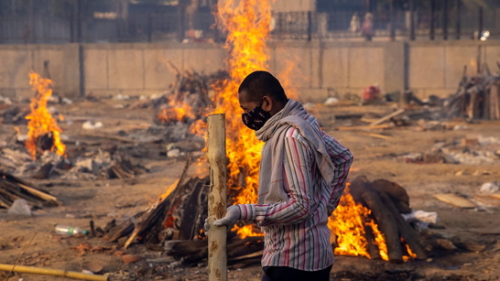
People are dying.

People are dying and there is no plan.

More good news? Variants are popping up. A double mutation strain has shown up. It is resistant to current vaccines. This will not go away. This is the devastation they warned of when the anti-maskers were out protesting the minor inconvenience of covering their face in public.
My country is on the verge of an emergency state. Our government has failed us. This is as dire a situation as it ever could be.
Look. I don't do much with my life. I write fics, some of you have read them and that's pretty much it. I spend my days with my head in the clouds because that's where I like to be.
But two days ago, my grandmother tested positive, had to be taken to hospital and the ambulance caught fire.
She barely made it to the urgent care she needs.
So, here I am, using whatever meager platform I have to cobble this request together. Because I have to do something.
If you can, donate.
Or spread the word.
Help. Please.
Alternatives to Outlining Fully
We all know I am a huge plotter – like excel spreadsheet level – but I wasn’t always like this. I’ve used many methods in the past and here are the best ones:
The Big Plot Points
In this method, you simply write out the big points like the catalyst, the midpoint, the climax and any big plot twists in your story. This helps you keep in mind the focus of your story as you write it, without actually plotting.
Baby Steps
More detailed than the Big Plot Points, Baby Steps involves writing all the little plot points down in chronological order. Think of it like a list of directions that get you from the first page to the end of the story. You can stray from the path, but this helps you know exactly where you’re going and what you want to achieve along the way.
Next 10 Steps
This is one I used a lot when writing fanfic in conjunction with the Big Plot Points. Here I would literally plan out the next 10 things that I wanted to happen in the story and treat it as a mini arc. If I’d known more about story structure, I could have done this 4 times and ended up with 4 acts (1, 2a, 2b, and 3). Instead, I did it 6 times and ending up with 170k words… don’t be me.
Save the Cat! Beat Sheet
An industry classic, the 15 beats of Save the Cat! can help you outline all the key moments that shape a story without interfering with panster discovery fun. This method breaks each of the 4 acts mentioned above into bite sized chunks to ensure that all elements of a compelling story are there. I would highly recommend the book Save the Cat! Writes a Novel by Jessica Brody if you want to learn more about this essential method.
Enjoy Editing
Finally if outlining is not for you, you’ll need to become well acquainted with editing. All drafts take editing, but many pansters will spend more time on this stage than plotters, but then plotters spend more time plotting! There’s nothing wrong with being a complete panster, but it’s worth keeping in mind if you wish to forgo the plotting stage entirely.
As always, hoped this helped!
[If reposting to Instagram, please tag @isabellestonebooks]
For Eid: A List of Muslim Contemporary Novels

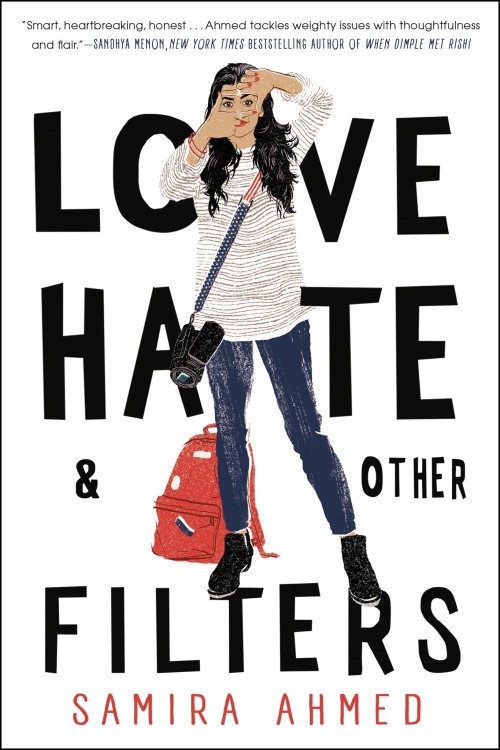
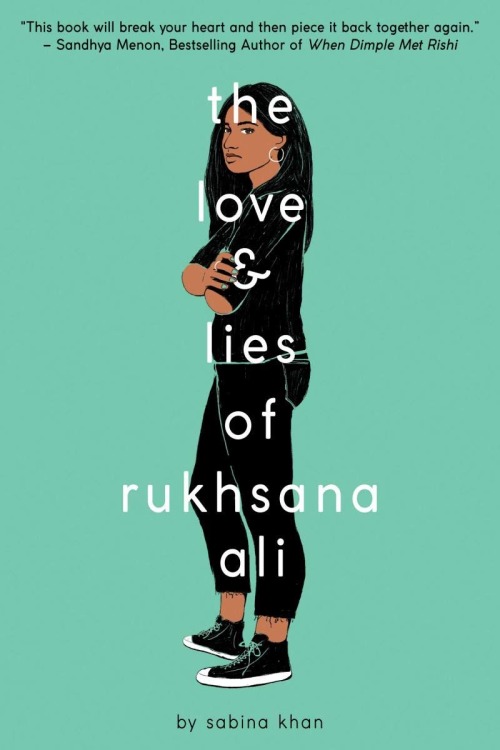
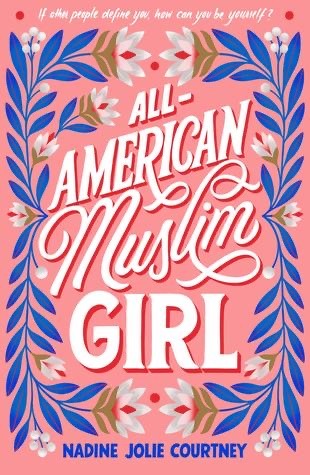
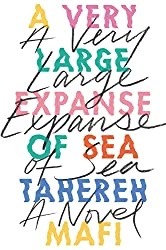
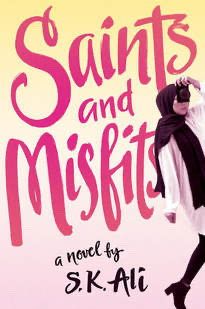
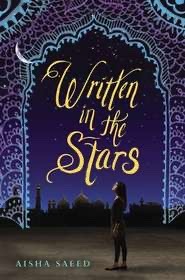
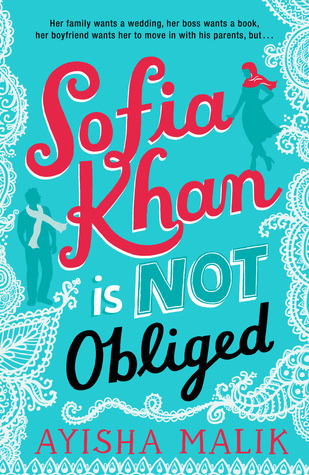

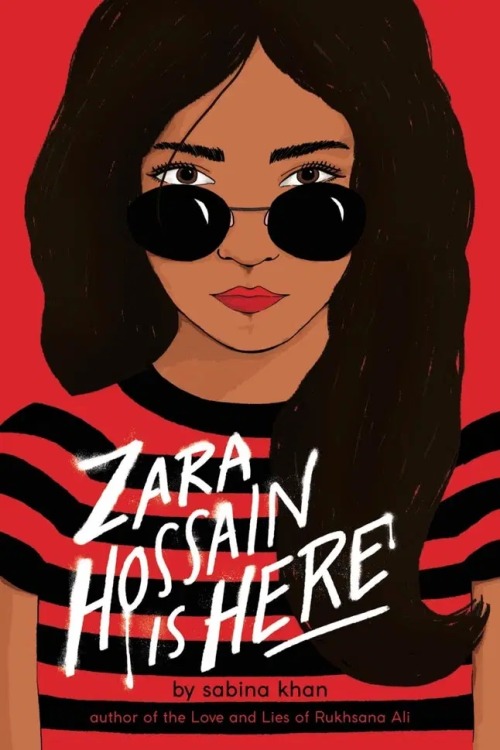
Love from A to Z by S.K. Ali
Love, Hate & Other Filters by Samira Ahmed
The Life and Lies of Rukshana Ali by Sabina Khan
All- American Muslim Girl by Nadine Jolie Courtney
A Very Large Expanse of Sea by Taherah Mafi
Saints and Misfits by S.K. Ali
Written in the Stars by Aisha Saeed
Sofia Khan is Not Obliged by by Ayisha Malik
The Bad Muslim Discount by Syed M. Masood
Zara Hossain is Here by Sabina Khan
